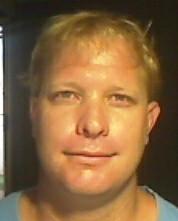Student seeks public help with barramundi migration study
Published on 21 April, 2011
Within the Central Queensland region, barramundi have a major environmental and economical value to commercial, recreational and Indigenous fisheries.
The La Nina cycle wet season of 2010/11 in the Central Queensland region has greatly contributed to increased river flows, causing minor to major flooding in the region's waterways.

John Lasek ... keen to find out more about barramundi movements
Natural environmental water flows are vital for primary and secondary production in rivers, lagoons, estuaries and coasts, for marine habitats.
A study, conducted by CQUniversity's John Lasek will investigate barramundi migration from Lake Awoonga impoundment stock into the estuarine tributaries of Port Curtis.
The investigation will gain vital local knowledge on the contribution of impoundment barramundi to natural wild populations of barramundi.
Within Lake Awoonga, there has been a stocking program for impoundment barramundi for many years, conducted by Gladstone Area Water Board.
With recent flooding events, a significant number of impoundment barramundi, Lates calcarifer, have migrated downstream of the Boyne River. Consequently, high numbers of adult barramundi are mixing with natural wild populations, potentially affecting food resources and competing with available shelter habitats.
Moreover, genetic mixing with wild populations can potentially introduce new genetic diseases into the wild population, significantly reducing the quality of the local gene pool. On an upside, with increased numbers of barramundi within the local systems, this can increase future local wild barramundi stocks.
Understanding the cause and effect of introducing apex predator populations into naturally wild habitats, and their interactions with existing wild fish communities, is vital in understanding how flood events can potentially effect downstream fish communities.
John has put a call out and requested all types of fishers that fish the Boyne River and surrounds to contribute to this study by retaining all legal size barramundi fish frames. A filleted fish frame should consist of a head and fish backbone to the tail intract, for biological measurements of the barramundi to be taken for data for the project.
Our student requires the fish frames to be stored for a short time until collection can be made. This type of project benefits all the fishing sectors so that they are better understood and to ensure they are around for our grandchildren and their grandchildren, who may want to go fishing and experience catching wild barramundi.
For further information please feel free to contact John on 0438 330 272 or alternatively email oceania_daddy@hotmail.com .

